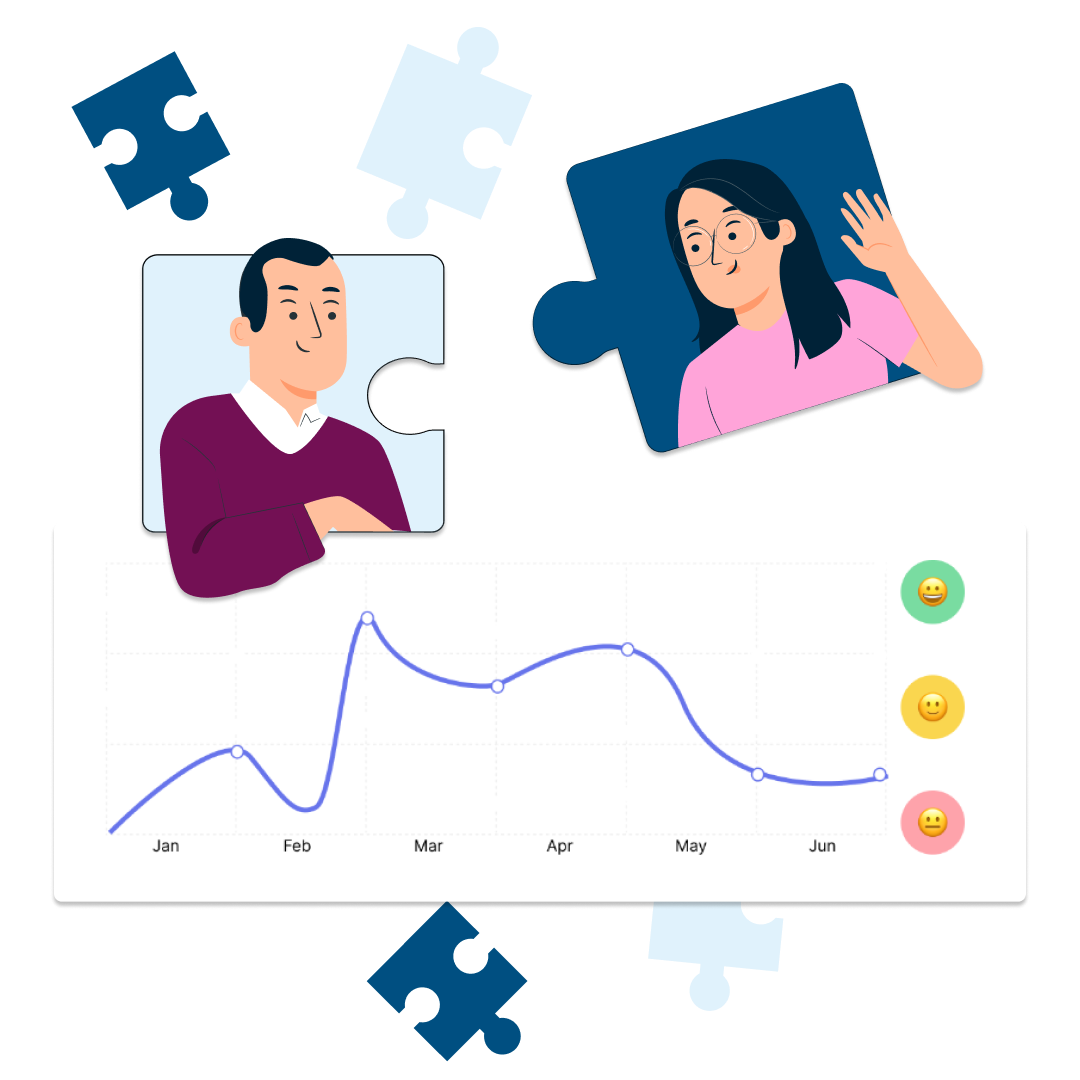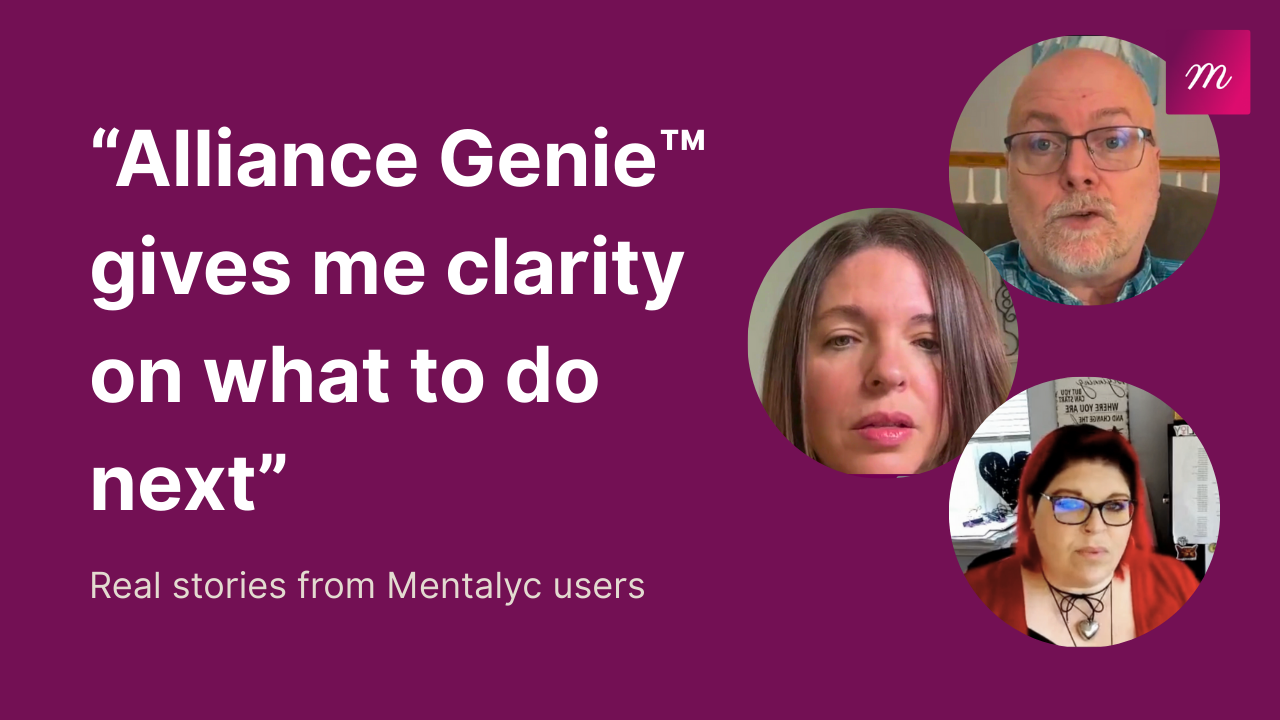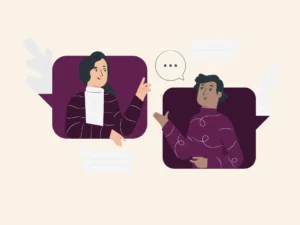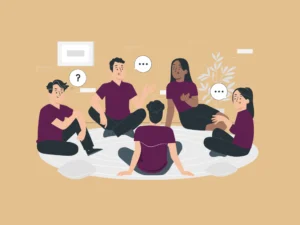The Session Rating Scale (SRS) is a simple but efficient way to get immediate feedback about clients’ experiences in therapy. It shows the therapeutic relationship between the therapist and client during sessions.
With the Session Rating Scale (SRS) therapists can find out how the client feels about a session. They can also check if their method is working. Therapists can use the feedback gotten from the SRS to make changes where needed. The SRS can help therapists build a stronger working relationship with their clients.
Introduction to the Session Rating Scale (SRS)
What Is the Session Rating Scale (SRS)?
SRS is a brief survey that clients fill out at the end of each therapy session. It consists of four questions that allow clients to rate different parts of the session. They include Relationship, Goals and Topics, Approach or Method, and Overall.
Why the SRS Matters in Therapy?
SRS is important because it allows therapists to identify and address issues that may arise in therapy. It also allows them to design interventions and provide care that is client-focused.
Origins and Development of the SRS
Who Created the SRS?
SRS was developed by Scott Miller and Barry Duncan. They stated that therapy should solely focus on the client’s needs.
Connection to the Outcome Rating Scale (ORS)
The SRS is a complementary tool to the Outcome Rating Scale (ORS). They are most times used together to get feedback from the client. The ORS measures the client’s overall well-being and progress. The ORS assesses different domains of the client’s life, including personal well-being, interpersonal relationships, and academic/professional engagements. While the SRS focuses on the quality of the relationship between the client and the therapist.
So here’s how the SRS and ORS work together;
- ORS at the beginning: Enables the therapist and the client to monitor progress in the client’s life. This informs the decision on what to address during the session.
- SRS at the end: Enables the therapist and the client to assess how the session went and whether it was helpful.
Understanding the SRS Components
The SRS consists of four parts. Each part elicits information about different aspects of the session. Below is an image of the SRS scale:
Session Rating Scale
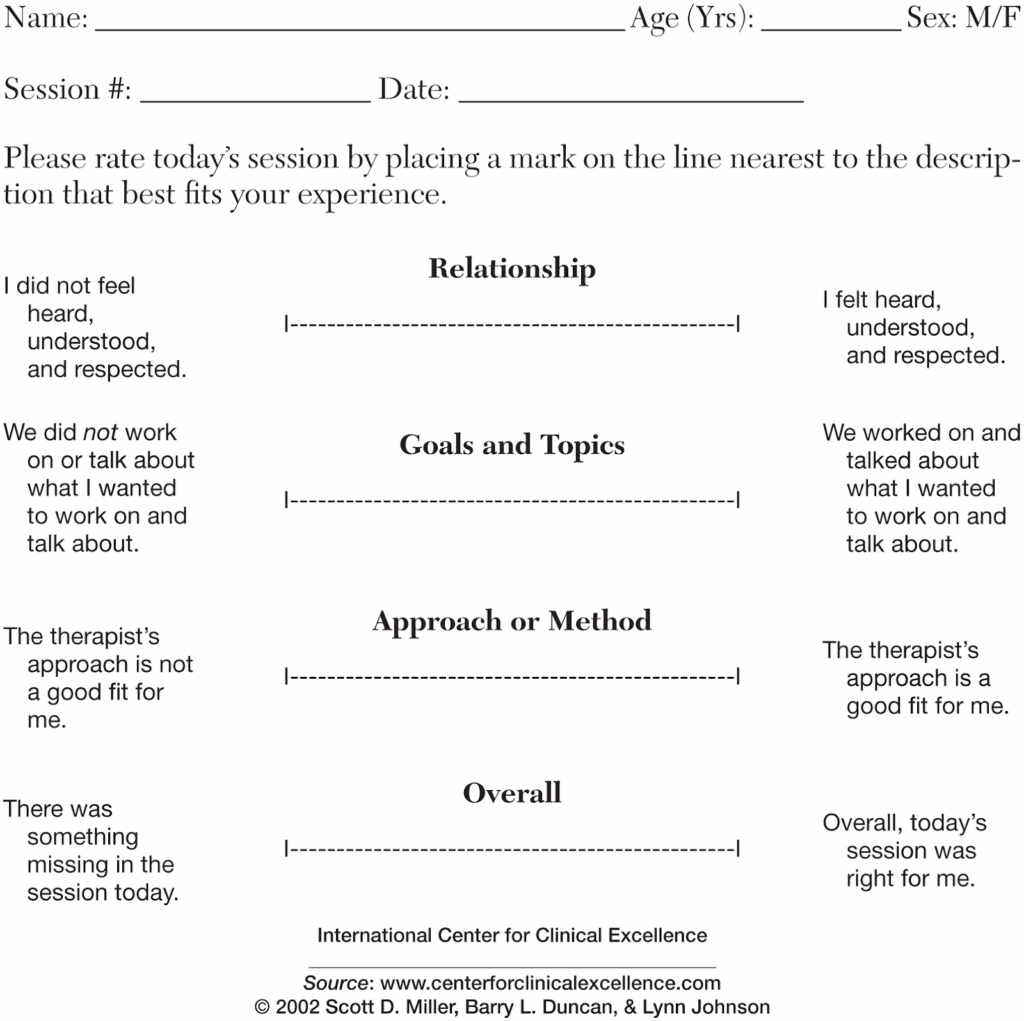
Relationship
This section lets clients rate the level of connection they felt with their therapist. It checks whether they felt they were heard, understood, or respected. For example, a client might think: “Did I feel like my therapist listened to me today?” For a client, not feeling any connection may make it hard to open up or truly express themselves.
Goals and Topics
The goals and topic section of the SRS focuses on the content of the session. It assesses whether or not topics discussed were relevant to the client’s goals or whether or not they mattered to them.
A client might ask, “Did we really discuss my mental health as I expected?”
A therapist may think that they are on the right track with their therapeutic intervention. However, the client may feel like the conversation is progressing in a different direction than they had hoped. With SRS, it’s easy for the therapist to identify whether or not there is a mismatch.
Approach or Method
This section assesses how the session was carried out by the therapist. This may include how the therapist conducted the session. This can include their techniques used or how they guided the conversation.
For instance, a client may ask, “Is the way my therapist handled my case really helpful?”
Feedback from clients will help therapists to understand if their strategies are helpful for the client.
Overall
This is the final section of the SRS, and it is a general check-in. It allows clients to rate how they feel about the entire session. It allows them to summarize their overall experience during therapy.
For instance, a client might ask, “How good was the general session for me today”?
The Psychometric Properties of the Session Rating Scale (SRS)
The psychometric properties refers to the quality and effectiveness of the scale in measuring what it intends to measure. An SRS with good psychometric properties shows that the tool is valid and reliable.
SRS Reliability and Validity
- Reliability: Being reliable means that if a client fills the scale under similar circumstances, the results would be similar. Research has shown that SRS is reliable, with a coefficient of .54 to .70..
- Validity: For a test of concurrent validity, SRS total scores were compared against the Revised Helping Alliance Questionnaire (HAQ II) total score. The correlations between both measures showed a result of .48 (p < .01). For the SRS, this means that it really captures the experiences of the client in therapy. Although some studies argue that due to its brevity and despite its reliability, the SRS compared to other similar measures has its own limitations.
Research Findings and Standardization
Many studies have shown how well it works and how helpful it is in therapy. The SRS is standardized and its results are consistent across different populations across different settings. This ensures that the results can be compared and are meaningful.
How Psychometrics Support Clinical Use
With the psychometrics, therapists can use the SRS to identify problems early in therapy. The SRS can also be used to make informed decisions regarding therapy sessions and measure progress better.
How to Administer the SRS in Therapy
Effectively using the SRS involves more than just handing a paper to the client. It is a thoughtful process aimed at ensuring that clients are comfortable with sharing feedback.
When and How Often to Use It
The best time to use the SRS is at the end of every therapy session. It should be the last thing before the client leaves. This allows for accurate reflection as the session is still fresh in their minds.
Paper vs. Digital SRS
The SRS can be administered in a paper or digital format.
- Paper Format: This is the traditional way, in which the SRS is printed on a simple sheet of paper. Clients can mark their responses using a pen. This is preferable for clients who are not comfortable with advanced digital technology.
- Digital Formats: Digital versions of the SRS are now available. They can be very useful for virtual sessions (or teletherapy). However, it is important to ensure provisions for privacy and data security.
Explaining It to Clients
It is very important for therapists to explain the use of SRS to clients. This can avoid confusion or allay the fear that it might be a test.
- Simply explain the SRS early on during the therapy and why it is useful.
- Encourage them to give honest feedback even though it’s not positive.
- If they are filling a paper format, let them know that they don’t need to write down their name.
- Quickly explain each of the four items to the client.
Interpreting the SRS Scores
Once the SRS has been filled by a client, their responses are scored and interpreted.
SRS Scoring Guide
The SRS uses a sliding scale, usually from 0 to 10 points (or 0 to 4 points in simplified versions). The sections are scored individually.
What Do Low or High SRS Scores Mean?
- Low scores (0-3/10) mean that the client was not satisfied with that particular aspect of the session. Clients with low scores are more likely to drop out of therapy.
- Mid scores (4-7/10) suggest a level of satisfaction with that part of the session, with room for improvement.
- High scores (8-10) indicate that the client is very satisfied with that section of the therapy.
For a 10-point scale, the maximum total score would be 40. Whatever the score may be, it is good to discuss this with the client.
Red Flags and Opportunities for Dialogue
Low scores on the SRS should be seen as an urgent need for dialogue. If “relationship” scores are low, it may mean the client is not feeling connected to the therapist.
Therapists should not feel guilty, ashamed, or defensive about SRS scores. It should rather be seen as a chance to learn and grow. A good way to begin would be to thank the client for being honest before proceeding to what was not working and their preference. Then, the therapist can adjust their approach to suit the client’s exact needs.
Benefits of Using the SRS
When clients feel like they’re heard, this strengthens the therapeutic alliance. The tool encourages clients to provide feedback without feeling shy or worried about hurting the feelings of the therapist. It also holds therapists accountable and makes for more effective therapy. This promotes an outcome-based practice.
Challenges and Limitations of the Session Rating Scale (SRS)
- Client reluctance or bias: Some clients might feel the need to be “nice” or avoid hurting the feelings of their therapist.
- Time constraints in session: In busy practices with tight schedules, therapists may not have the time to administer the SRS.
- Misinterpretation of feedback: For instance, a low score on “approach or method” may not necessarily mean that the therapist’s technique is bad. It may just mean that the client prefers a different style. This is why it is important to discuss these scores with the client.
Best Practices for Therapists
To get the most out of the SRS, therapists should:
- Create a safe space for honest feedback- This means not being defensive, showing gratitude, and being open to receiving difficult feedback.
- Constructively responding to low scores- When a client gives a low score, show curiosity instead of judgment. You can ask questions like: “What could have made this part of the session more helpful?”. You can also collaborate on solutions and understand their experiences better in order to provide a more tailored therapy to their needs.
- Integrate feedback into future sessions- You should not just talk about the feedback and forget about it. Try to make adjustments for the next sessions. Similarly, do check-ins to show the client that you listened and remembered their concerns. Finally, take note and track patterns in feedback to learn about client preferences.
SRS in Group and Teletherapy Settings
The SRS can be used for all types of therapy whether individual or group.
Adapting SRS for Different Formats
For Group Therapy– You can ask: “How did you feel about the group’s connection today?”. This provides insight into how the group is functioning as a whole.
For Couples/family therapy– The SRS can also be filled out after couples or family therapy. This can open up discussions about the dynamics in these relationships.
In Teletherapy Settings– While teletherapy has been shown to be effective, there are still concerns about its effect on the therapeutic alliance. The concern is that physical distance can be a challenge to effective therapy. The SRS can thus provide a structured yet efficient way to assess this impact.
Tips for Online Use
The need for digital formats of the SRS has grown with the demand for teletherapy. It is therefore important to consider the following:
- Use secure platforms: Ensure that any digital survey tool used protects client privacy. That is, ensure that they are HIPAA compliant.
- Screen-sharing: Therapists can share their screens to demonstrate the use of SRS to clients.
- Use of direct links: Therapists can send a direct link to clients at the end of the session.
Research and Evidence Behind the SRS
The SRS is backed by scientific research.
Clinical Validation and Studies
Many studies have been conducted using the SRS (and the ORS). These studies have consistently shown that the tool is reliable, valid, and widely accepted.
Impact on Therapeutic Outcomes
Studies have shown that therapists who use the SRS regularly have clients who are more likely to stay in therapy. This is because it allows both parties in the therapeutic relationship to achieve set goals.
Conclusion: Making the SRS Part of Outcome-Informed Practice
The SRS does more than collect feedback. It creates space for honest conversation. It shows the client that their voice matters in the process. It also keeps the therapist open, flexible, and focused on what helps most.
Bringing the SRS into regular practice is not just a routine. It is a clinical decision to improve the quality of care. When clients feel heard and understood, therapy becomes more effective.
FAQs: Common Questions About the Session Rating Scale (SRS)
Is The SRS Evidence-Based?
Yes, it is. The SRS is an extensively researched tool with clinical validations. Its psychometric properties have been supported by a growing body of literature.
Can The SRS Replace Other Feedback Tools?
The SRS does not necessarily replace all other feedback tools. However, it is great for instant feedback on the quality of the session. It can be used alongside other feedback tools. It is also meant to be used with other clinical judgment and observation.
How Accurate Is The Client Self-Reporting?
Clients are the best source for reporting their own experiences. It gives them space to share how they felt about the session. However, self-reporting can still carry some bias. Clients may hold back. In other cases, they feel unsure, or want to please the therapist. The SRS helps reduce this bias. When it is used regularly, it becomes easier for clients to respond honestly.
References
Campbell, A., & Hemsley, S. (2009). Outcome Rating Scale and Session Rating Scale in psychological practice: Clinical utility of ultra-brief measures. Clinical Psychologist, 13(1), 1–9.
Delgadillo, J., McMillan, D., Gilbody, S., Jong, K., Lucock, M., Lutz, W., Rubel, J., Aguirre, E., & Ali, S. (2021). Cost-effectiveness of feedback-informed psychological treatment: Evidence from the IAPT-FIT trial. Behaviour Research and Therapy, 142, 103873.
Miller, S. D., Bargmann, S., Chow, D., Seidel, J., & Maeschalck, C. (2016). Feedback-informed treatment (FIT): Improving the outcome of psychotherapy one person at a time. In W. O’Donohue & A. Maragakis (Eds.), Quality improvement in behavioral health (pp. 247–262). Springer.
Murphy, M. G., Rakes, S., & Harris, R. M. (2020). The psychometric properties of the Session Rating Scale: A narrative review. Journal of Evidence-Based Social Work, 17(3), 279–299.
Why other mental health professionals love Mentalyc

“Reading transcripts helps me tighten up and come across more the way I want to present myself to clients … it’s helped me improve and keep getting better.”
Licensed Marriage and Family Therapist

“It’s really giving me some good confidence … and areas of improvement to see nuances I didn’t see before.”

“Using Alliance Genie has really improved my notes … It tells me what I’m doing and gives me an approach of what’s next.”

“There is a lot more feedback and suggestions in it than before … that makes things a little bit easier for me.”


